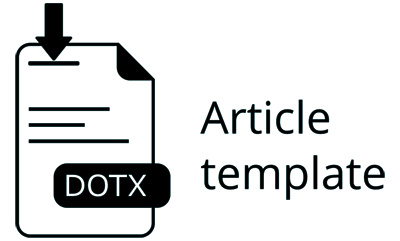Studi modeling dan mapping inundasi tsunami menggunakan software Delft3D studi kasus Pantai Labuan Jukung Lampung
Abstract
To begin with, one of the valuable beaches at Pesisir Tengah Krui District is Labuhan Jukung Beach that directly encounters the Indian Ocean and is crossed by tectonic plates. The current position could consequence a tsunami disaster and cause loss and damage to the area at any time soon. In addition, no hazard map released by the National Center for Volcanology and Disaster Mitigation in the study location is one of the shortcomings of tsunami-prone areas in the West Coast tourist area. Tsunami wave propagation model establishment is a monumentally vital step in tsunami mitigation to pinpoint areas which are vulnerable to tsunami disasters and maximize the damage control. One way or another is by utilizing Delft3D 4.04.01 software according to wave propagation simulation scenario analysis. The input for modeling adopts historical tsunami height data which has similar characteristics to the case study location points, simultaneously 3.6 meter, 8 meter and 15 meter. The outcome wave height of 3.6 meter takes within 36 minutes to reach the coast and it does not cause inundation, meanwhile the outcome of waves height of 8 meter and 15 meter are accomplishing a tsunami inundation on land which takes 33 - 35 minutes to approach the coast. The data used in these scenarios demands the model accuracy requirements of modeling validation by inspecting the wavelengths formed in shallow water. Based on all of these scenario modeling results, the maximum propagation scenario for an 8 meter wave height on land is 330 meter, on the other hand for a 15 meter wave height is 450 meter from the coastline.
References
Ali, I. A. (2021). Modelling of Wave Height for the Study of Ocean Wave Energy in the West of Lampung Province. Jurnal Ilmiah Teknologi Maritim, 15(2).
Anwar, S. (2021). Perbandingan Nilai Hazard Kejadian Tsunami di Indonesia Berdasarkan Posisi Garis Khatulistiwa (Katalog Tsunami Indonesia 1802-2018). Jurnal Lingkungan dan Bencana Geologi, 12(1), 33-45.
Armono, H. D. (2021). Analysis of Tsunami Wave Height, Run-up, and Inundation in the Coastal of Blitar and Malang Regency. IOP Conference Series: Earth and Environmental Science, 936(1). https://doi.org/10.1088/1755-1315/936/1/012013.
Budiyanto, D., Septiana, T., & Muda, M. A. (2020). Pemanfaatan Analisis Spasial untuk Pemetaan Risiko Bencana Alam Tsunami Menggunakan Pengolahan Data Spasial Sistem Informasi Geografis. Kumpulan Jurnal Ilmu Komputer (KLIK), 07(02), 210-218.
Faradella, M., Wiyono, R. U., & Halik, G. (2024). Tsunami Simulation in Paseban Beach Using Nesting Method on Delft3D Modeling. Rekayasa Sipil, 18(1), 41-48.
Fitri, E. A., Karyadi, B., Johan, H., & Farid, M. (2023, maret). Model E-Booklet Fisika Terintegrasi Mitigasi Bencana Tsunami Pada Materi Gelombang Untuk Siswa di Pulau Enggano. JPF (Jurnal Pendidikan Fisika) FKIP UM Metro, 11(1), 79-93.
Gloria, L. E., Wiyono, U. A., & Halik, G. (2023). Simulation of High Wave Inundation at Payangan Beach Using Delft3D for Coastal Mitigation. U Karst, 07(01), 61-74.
Hamilton, W. (1973). Tectonics of the Indonesian Region. Bulletin of the Geological Society of Malaysia, 6, 3-10.
Kurniawan, F. (2019). Pemodelan Tsunami dan Alternatif Jalur Evakuasi Berbasis Sistem Informasi Geografi di Kecamatan Krui Selatan Kabupaten Pesisir Barat Tahun 2019. Universitas Lampung, Bandar Lampung.
Mardika, G. I. (2021). Analisis Pasang Surut Menggunakan Metode Least Square di Wilayah Perairan Muara Sungai Poso. Journal of Infrastructure Planning, and Design, 1(2).
Miftarokhah, A. (2013). Kerentanan Bencana Tsunami di Pantai Barat Kabupaten Pandeglang.
Muchlian, M., Honesti, L., & Djali, N. (2021). Studi Komparasi antara Peta Inundasi Tsunami Hasil Pemodelan TUNAMI N3 dengan Peta Topografi Daerah. Jurnal Teknik Sipil ITP, 8(2), 46-51.
Pamuji, D., Setiadji, P., & Karapa, E. (2023). Strategi Pengelolaan Wilayah Pesisir Kabupaten Sarmi Dalam Upaya Mitigasi Tsunami. Jurnal Arsitektur dan Planologi, 13(1), 27-33.
Pratiwi, D. &. (2021). Analisis Potensial Penjalaran Gelombang Tsunami di Pesisir Barat Lampung, Indonesia.
Riyadi, R. (2019). Analisis Peta Bentuk Rupa Bumi Dalam Menentukan Lokasi Dari Pengaruh Tsunami di Kabupaten Cilacap. Ijtimaiya: Journal of Social Science Teaching, 3(2), 86-186.
Saleh, D. F., Baeda, A. Y., & Rahman, S. (2022). Skema Mitigasi Tsunami Mendatang di Pelabuhan Garongkong, Barru, Sulawesi Selatan. Jurnal Riset & Teknologi Terapan Kemaritiman, 1(2), 42-46.
Sari, I. N., & Prastowo, T. (2022). Analisis Seismisitas Potensi Bahaya Bencana Seismik Di Wilayah Selatan Pulau Sumatera. Jurnal Inovasi Fisika Indonesia, 11(2), 12-19.
Sugiyono. (2009). Metode Penelitian Kuantitatif, Kualitatif dan R&D. Bandung: ALFABETA.
Triatmodjo, B. (1999). Teknik Pantai (5 ed.). Yogyakarta: Beta Offset.
Triatmodjo, B. (2006). Perencanaan Bangunan Pantai (2nd ed.). Yogyakarta: Beta Offset.
Trusina, Fahmi, M., Ibrahim, Fachrurrazi, & Al'ala, M. (2023). Studi Perencanaan Jetty pada Muara Pembuangan Air (Stormwater Outfall) di PT Perta Arun Gas, Lhokseumawe. Jurnal Teknik Sipil, 15(2), 36-46.
Wang, X. (2009). User Manual For Comcot Version 1.7 (First Draft). Cornell University. USA.
Wulung, S. R., & Abdullah, C. U. (2020, Februari). Upaya Mitigasi Pasca Tsunami di Destinasi Pariwisata. Open Journal Systems, 14(7), 2883-2893.
Authors who publish with this journal agree to the following terms:
- Authors retain copyright and grant the journal right of first publication with the work simultaneously licensed under a Creative Commons Attribution License that allows others to share the work with an acknowledgement of the work's authorship and initial publication in this journal.
- Authors are able to enter into separate, additional contractual arrangements for the non-exclusive distribution of the journal's published version of the work (e.g., post it to an institutional repository or publish it in a book), with an acknowledgement of its initial publication in this journal.
- Authors are permitted and encouraged to post their work online (e.g., in institutional repositories or on their website) prior to and during the submission process, as it can lead to productive exchanges, as well as earlier and greater citation of published work (See The Effect of Open Access).
 Abstract viewed = 97 times
Abstract viewed = 97 times
 PDF downloaded = 127 times
PDF downloaded = 127 times









